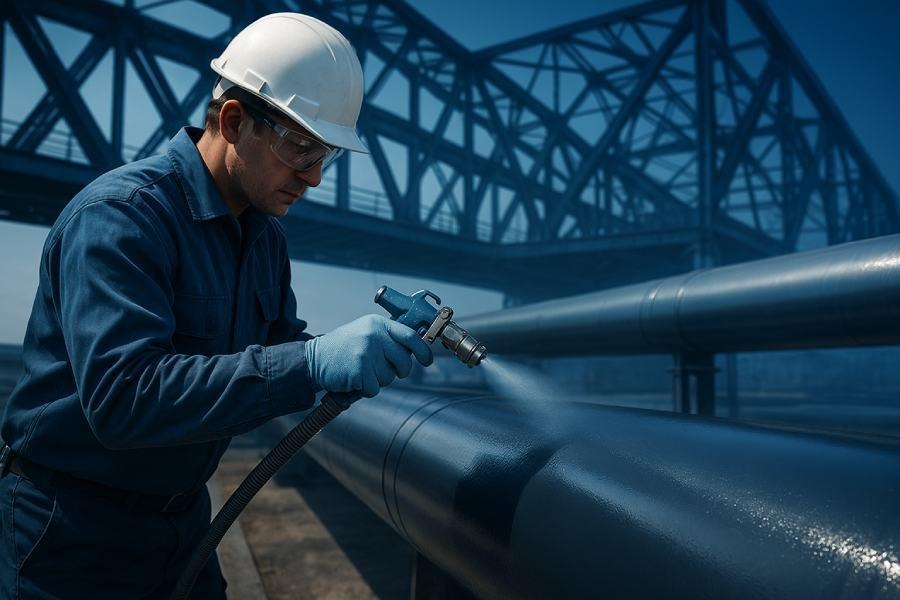Corrosion protection is vital for maintaining the integrity and safety of infrastructure across industries such as automotive manufacturing, construction, and metal fabrication. As steel corrosion and rust continue to threaten durability, implementing expert protection strategies is crucial. This guide examines how corrosion impacts infrastructure longevity and highlights advanced coatings, materials, and technologies used to prevent deterioration—reflecting best practices from leading automotive manufacturers and collision repair experts.
Understanding the Impact of Corrosion on Infrastructure Durability
Corrosion, driven by electrochemical reactions like oxidation, weakens metal structures and increases maintenance costs. It’s especially damaging to steel, the core of bridges, pipelines, and vehicles, leading to fatigue and safety risks. Effective corrosion prevention—using internal and external protection—is vital. In automotive manufacturing, techniques like E-Coating provide uniform anti-corrosion coverage, sealing metal surfaces to prevent rust and improve paint adhesion.
Common Causes and Types of Corrosion in Infrastructure
Identifying the root causes and specific types of corrosion is fundamental to selecting appropriate protective solutions. Corrosion in infrastructure primarily arises from environmental conditions including moisture, salt exposure, temperature fluctuations, and aggressive chemicals. Key types include:
- Uniform Corrosion: Even material loss across a surface, commonly seen on unprotected steel exposed to weather and oxidation.
- Galvanic Corrosion: Occurs when dissimilar metals in contact facilitate electron exchange, accelerating degradation.
- Crevice Corrosion: Localized corrosion at shielded areas such as joints or under deposits, where oxygen access is obstructed.
- Stress Corrosion Cracking (SCC): Crack formation due to tensile stress combined with a corrosive environment, threatening structural components.
- Rust Propagation: A progressive manifestation of uniform corrosion, where iron oxides form and spread rapidly along susceptible metal surfaces.
In welding applications used for body panels and bolt-on parts, thermal and mechanical stresses create weak points prone to corrosion. To protect these areas, specialized corrosion prevention methods—like applying high-adhesion, chemically resistant seam sealants—are essential.
Advanced Materials and Coatings for Corrosion Protection

Electro Deposition Coating (E-Coating)
Factory E-Coat, a key element in automotive corrosion protection, uses electro deposition coating by immersing metal parts in charged paint baths. This process provides complete, uniform coverage—even in intricate areas—offering strong internal protection beneath primer, base coat, and clear coat layers. The result is a durable, integrated defense system that extends component lifespan and prevents rust formation.
Specialty Coatings and Paint Systems
In addition to E-Coating, specialty coatings such as weather resistant clear coats and chemically-resistant primers are critical. These multilayer paint systems are designed to withstand UV exposure, moisture ingress, and mechanical abrasion—key factors in corrosion prevention.
Coatings that incorporate cavity wax are particularly effective when applied to inaccessible hollow sections within steel structures, providing ongoing protection against moisture accumulation and oxidation. Seam sealants and adhesives from trusted providers like 3M Automotive Aftermarket Division add further defense by sealing joints and gaps vulnerable to environmental attack.
Primer, Base Coat, and Clear Coat Integration
The repair process in collision repair divisions benefits from high-quality primer, base coat, and clear coat products manufactured by leading paint manufacturers. These layers contribute to corrosion protection by creating an impermeable barrier against contaminants while maintaining aesthetic integrity.
Innovative Techniques and Technologies for Corrosion Prevention
Advanced Application Technologies
Utilizing state-of-the-art paint spray equipment and masking materials ensures precise application of coatings and sealants, minimizing defects that could expose substrates to corrosive agents. In metal shops, the combination of abrasives and cleaning agents prepares surfaces thoroughly before coating, optimizing adhesion and corrosion protection.
PPS™ Technology and Collision Repair Products
Advanced solutions like the PPS™ (Paint Preparation System) optimize surface prep and paint application for consistent corrosion protection in auto repair. Combining specialized adhesives, sealants, and cavity wax with regular inspections and targeted repairs creates a comprehensive, long-lasting defense against rust and structural degradation in both vehicles and infrastructure.
Maintenance Best Practices to Extend Infrastructure Lifespan
Routine inspections and timely surface treatments are vital to preventing corrosion. By identifying early signs of oxidation or wear, maintenance teams can use abrasives, cleaning compounds, and restorative polishes to halt deterioration before it worsens, preserving both appearance and structural integrity.
Environmental management and the use of advanced rust protection strategies further strengthen defense against corrosion. Weather-resistant clear coats, specialty coatings, and factory-applied E-Coat with cavity wax pre-treatment on replacement parts enhance durability. Seamless collaboration between repair shops, manufacturers, and metal facilities ensures these protective measures are properly integrated, maintaining consistent quality and long-term performance.
For specialized products and treatments in Australian infrastructure maintenance, consulting with experts like Australian Inhibitor provides access to region-specific corrosion protection solutions backed by rigorous testing and compliance standards.

